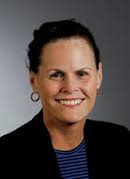On June 3rd, Sue Swenson assumed the role of Chair of the FirstNet Board of Directors. She spoke to a group of about 500 people from public safety agencies, industry and the federal government at a conference near Boulder, Colorado, sponsored by Public Safety Communications Research (PSCR), an agency of the federal government’s Department of Commerce. Her prepared remarks are here.
In Sue Swenson, FirstNet has found a fireball of a leader.
Her remarks are refreshing. She admitted past Firstnet mistakes which have set back the effort. She’s willing to admit her own, past, misgivings. But she convincingly conveyed why she accepted the Chair’s role: this work is something which will make a difference in the lives of every American. And that same motivation drives the rest of us.
Sue has a sense of urgency, but not emergency. I hate it when a tech employee comes to me and says “we have an emergency”. As a former cop my response is always “oh yeah, whose life is in danger?” Swenson feels the same way – unless someone has died, problems can be fixed. She’s obviously a “can do” leader.
Sue is draconian on customer service. When FirstNet makes a commitment they must keep that commitment. If you can’t do it, don’t make the commitment. “Don’t do that with me [drop commitments], or you will suffer.”
Sue’s remarks indicate a new era of transparency and openness is starting at FirstNet. Here are some of the other indicators:
- The FirstNet Board meeting yesterday was conducted in a room open to the public at a hotel. No more full Board meetings behind closed doors, with only a handful of people in the room, televised with grainy video and hit-and-miss audio. This is the way city councils and state legislatures and other public bodies meet – it is great to see the Board meeting that same standard.
- FirstNet staff, to a person, are open and engaging – in person, on the phone, via email. They ask questions, they ask for opinions, they answer questions honestly, understanding they only have a few of the answers. Most of FirstNet’s future is unknown – it is yet to be written. They, like Sue, are committed.
- FirstNet has promised a public comment and input process on major parts of its work, like a comprehensive network request for proposals (RFP) for equipment and services.
- The FirstNet website, while still rudimentary, contains hints of the new transparency. Features such as a blog give timely news. For example, FirstNet now has about 90 employees and contractors and we’re seeing announcements of some of those hires on the blog and website. In fact, FirstNet says they will accept guest blog posts from outside – and I’ll be taking them up on that offer!
- FirstNet encourages potential vendors to engage and meet with staff. This is extraordinarily important as it keeps industry engaged, keeps FirstNet informed as the technology changes, and gives even small vendors – like local independent telephone companies and tech startups – a chance to be heard. I’ve heard that, in the past, FirstNet staff listened politely to presentations but were forbidden to ask questions or engage. So this is a welcome change.
- FirstNet is highlighting best practices from states – work like a great poster developed by Oregon or a sharepoint site developed by Maryland. This indicates a true intention to collaborate and work with states.
All is not sweetness and light, of course. It is still frustrating to hear a lot of talk about the “program roadmap” but yet only have a two-page executive summary which describes it. T. J. Kennedy, at the Board meeting, described some of the milestones – financial, personnel – which his team has met. But most of the roadmap is a really a fog to those of us on the outside.
There is also the issue of sustainability. Swenson indicated “the strategy for FirstNet must be a sustainable plan, and that includes recapitalization of the network”. This issue – a business plan to finance the construction and operation of the network – is of enormous interest to elected officials such as fire district commissioners and state legislators. But no viable public business plan exists. How will a nationwide network with only a few million users be able to stay current in technology and coverage and user demands as LTE wireless technology rapidly develops? We hope and trust a business plan is under development. Many of us in states could help with this if we see draft versions and perhaps run it through the proposed public comment process
I admire retiring chair Sam Ginn, and thank him for taking on the responsibility – something he didn’t have to do – to launch this whole enterprise and get the FirstNet ball rolling and keep it rolling up some pretty steep hills. And I especially thank him for a phone call he made in mid-2012 to recruit Sue Swenson to the Board.
I look forward to the Swenson Era at FirstNet. As she eloquently stated: “[In the past] We didn’t make it clear whose network it is – it is public safety’s network and we have the privilege of working on it.”
I feel the same way – this network is owned by cops and firefighters and electrical lineworkers and building inspectors and EMT’s and telecommunicators who answer 911 calls every day. Like Sue, I’m just privileged to work on it.







 Friday, June 29th was the second and final day of the
Friday, June 29th was the second and final day of the 
